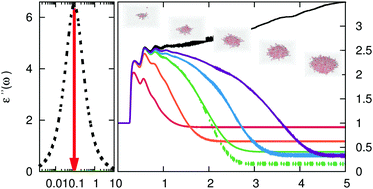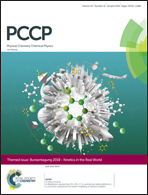Micellar confinement disrupts collective structure and accelerates collective dynamics of encapsulated water
Abstract
This computational study deals with the collective structure and dynamics as well as their interaction seen from a dielectric viewpoint in zwitterionic reverse micelles for which a force field was designed de novo. For this end, a dualistic strategy is followed: the raw data are generated by extensive microscopic molecular dynamics (MD) simulations while the subsequent analysis has a focus on mesoscopic dielectric properties. The unusually low dielectric signals as well as the remarkable acceleration of collective dynamics is elucidated in great detail. This structural and dynamic behaviour is caused essentially by non-specific micellar boundary conditions. We found that in these ion lacking reverse micelles the water core and the water sheath compensate each other dielectrically which can be understood as a LeChatelier phenomenon facilitating the transition from highly polar encapsulated water to the non-polar low dielectric medium octane. In addition, specific chemical effects are brought about by the perturbing influence of the surfactants. This comprehensive analysis aids both in understanding and designing the dipolar properties of liquid polar spherical colloids dispersed in a hydrophobic medium.



 Please wait while we load your content...
Please wait while we load your content...